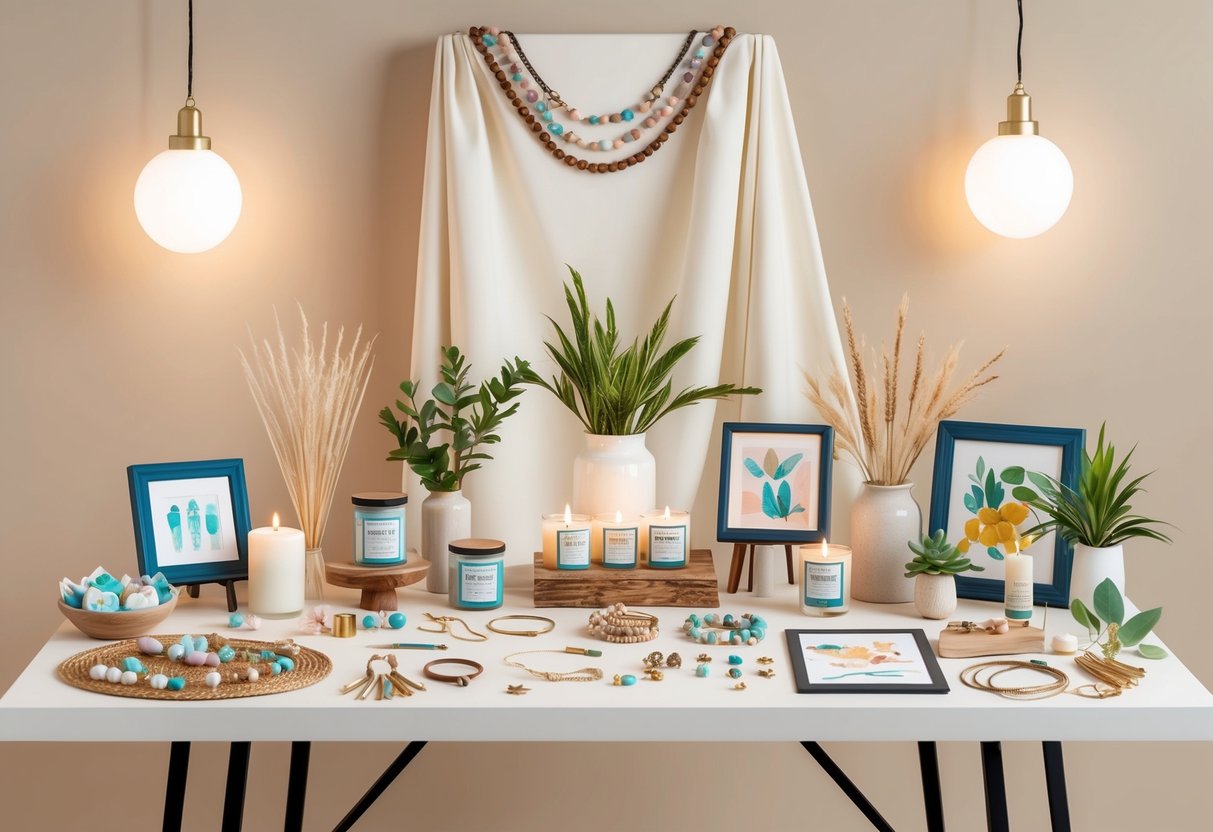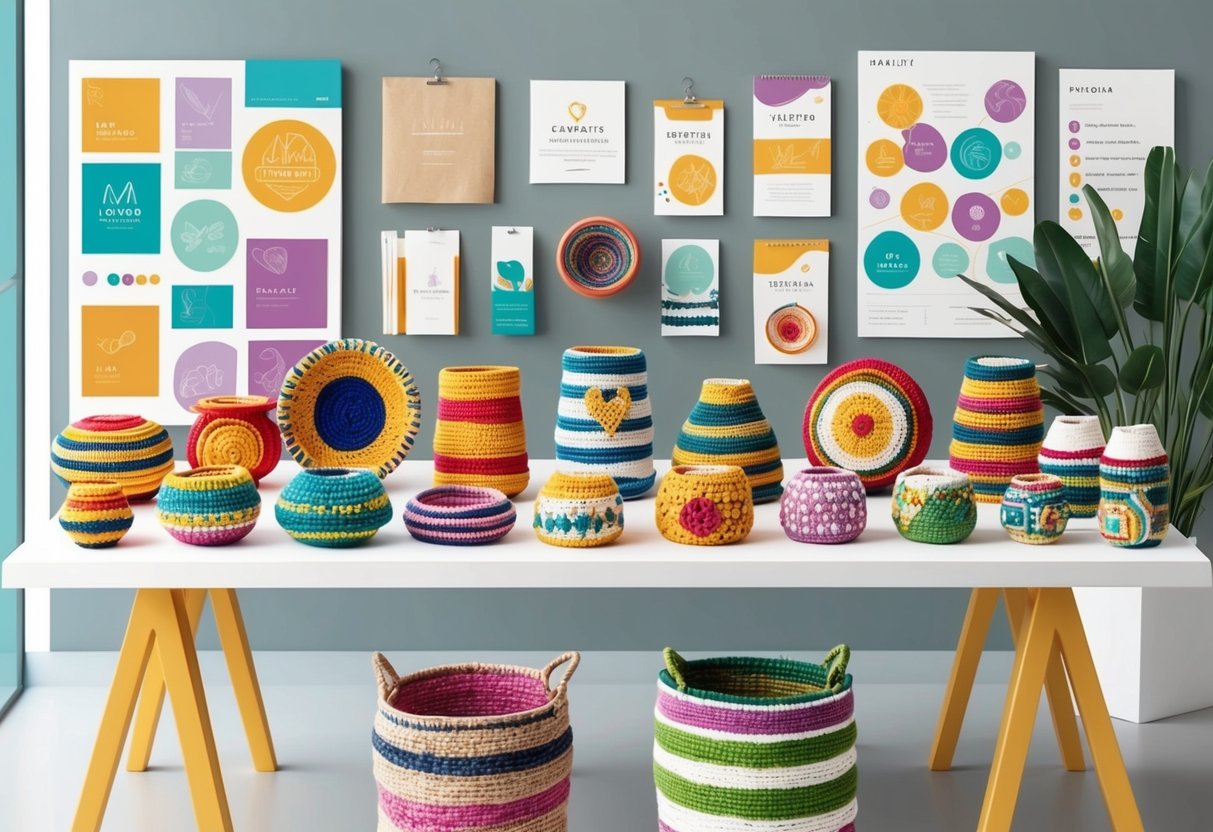
Building an Online Store
Some creators choose to build their own online store using platforms such as Shopify, Wix, or WooCommerce for WordPress. This approach offers more control over branding, layout, and direct customer engagement.
Selling on your own website allows sellers to avoid marketplace fees and set their own policies and pricing without compromise. Key steps include selecting a custom domain, creating organized product pages, and integrating secure payment gateways.
Sellers should pay close attention to site speed, mobile responsiveness, and SEO optimization to attract organic traffic and improve conversion rates. Features such as an FAQ section, customer testimonials, and a blog can help build credibility and keep shoppers engaged.
Running promotions, utilizing email marketing, and optimizing for keywords related to handmade products can further boost the visibility and profitability of an independent online store. For creative business inspiration, sellers can explore guides on profitable things to make and sell from home.
Using Marketplaces Like Amazon and eBay
Listing handmade products on large online marketplaces such as Amazon Handmade or eBay can significantly increase exposure. These platforms attract millions of daily visitors, so sellers benefit from a larger customer base, though competition is often higher.
Amazon Handmade requires an application and review process, focusing on sellers who make their goods themselves rather than reselling. Listings need precise descriptions, competitive pricing, and adherence to strict shipping and customer service standards.
On eBay, categories for homemade crafts and vintage items allow for broader listing options, including auctions or fixed-price formats. Sellers must be aware of marketplace fees and fulfillment requirements for both Amazon and eBay.
Strong product images, detailed descriptions, and excellent ratings are important for establishing credibility and increasing sales when using any online marketplace. Integration with inventory management tools is useful for tracking stock and handling multiple sales channels efficiently.
Successful Sales Strategies for DIY Crafters
Building a thriving craft business in the e-commerce space relies on smart pricing, effective promotions, and responsive customer communication. Sellers who approach these areas strategically can improve their visibility and grow profits whether selling on Etsy, a personal site, or other online platforms.
Pricing Handmade Crafts
Setting competitive yet sustainable prices is crucial for anyone aiming to sell online. DIY crafters should calculate costs precisely—this includes raw materials, packaging, shipping, and time spent.
Factoring in overhead and marketplace fees is necessary to prevent losses. A transparent pricing formula can offer clarity.
For example:
| Cost Component | Amount ($) |
|---|---|
| Materials | $5 |
| Hourly Labor (2 hrs, $10/hr) | $20 |
| Packaging | $2 |
| Listing/Transaction Fees | $3 |
| Total Cost | $30 |
| Markup (50%) | $15 |
| Final Price | $45 |
Benchmarking against similar handmade items helps ensure items aren’t under- or overpriced. Many sellers find that communicating the value and uniqueness of their work is vital in justifying higher prices, especially for custom or labor-intensive crafts.
Regularly reviewing pricing as material costs and trends shift keeps the offerings competitive and profitable.
Promotions and Bundling Products
Attracting attention in a saturated e-commerce market often requires creative promotions. Limited-time discounts, seasonal sales, and exclusive offers can encourage buyers to try new handmade crafts.
Promotions are especially effective during holidays or special events, driving additional traffic to an online shop. Bundling products can increase average order value and move slower inventory.
For instance, offering a set of themed crafts—like candle sets or stationery collections—appeals to gift shoppers. Crafters can also try a “buy one, get one 50% off” deal to incentivize multiple item purchases.
Highlighting bundled savings or free shipping in product listings can make offers more enticing. Using clear, compelling visuals and detailed descriptions will help bundles stand out in any craft business storefront, especially when selling on Etsy or similar platforms.
For more inspiration on product ideas and bundling, see this list of crafts that sell well online.
Responding to Customer Feedback
Responsive customer service is non-negotiable in e-commerce. Monitoring reviews and messages allows sellers to recognize issues early and resolve complaints quickly.
This commitment to service builds reputation and trust among buyers of handmade items. Polite, prompt replies to questions or concerns help create positive experiences that turn one-time customers into repeat buyers.
If negative feedback appears, acknowledging the concern and offering a solution—such as a replacement or refund—can mitigate damage and demonstrate accountability. Showcasing positive customer testimonials and ratings in product listings can further boost credibility.
Engaging with feedback constructively also guides future product development, allowing crafters to adjust designs, packaging, or descriptions as needed to better meet buyer expectations.
Effective Branding and Marketing for Your Craft Business

Standing out as a craft entrepreneur requires a clear brand identity and a practical marketing strategy. Establishing trust, attracting customers, and increasing sales depend on how well a small business communicates its uniqueness and professionalism online.
Branding Basics for DIY Entrepreneurs
Branding goes beyond a logo; it touches every aspect of the craft business, from product packaging to the tone used in messaging. A memorable brand identity helps customers remember the shop and feel confident in their purchase, which is especially vital for new online shops.
Elements like a consistent color palette and easy-to-read fonts matter. Designs reflecting the crafts’ style are also important.
High-quality product photos are essential because online buyers rely on visuals to judge quality. Images should be clear, well-lit, and highlight unique details.
A compelling brand story strengthens connections with buyers. Communicate the motivation behind the shop and describe what sets products apart.
Display any commitments to quality or sustainability. Consider this quick checklist for branding:
- Clear, memorable shop name
- Consistent logo and colors
- Professional, cohesive packaging
- Authentic brand story across all platforms
Maintaining branding consistency across every touchpoint—from the online shop to social platforms—builds recognition and reliability with customers.
Leveraging Social Media Platforms
Social media is a powerful marketing tool for DIY entrepreneurs. Platforms like Instagram, Facebook, and Pinterest amplify visibility for small businesses, especially those selling visual products like crafts.
Instagram remains a top choice due to its visual nature. Use features like Stories, Reels, and Shop posts to showcase products in real-life settings and share creative processes.
Engaging captions and hashtags targeting craft and handmade product communities attract the right audience. Facebook enables event promotions, shop integration, and group engagement with craft enthusiasts.
Pinterest drives traffic to an online shop by allowing sellers to share pins featuring their products, tutorials, and mood boards. To grow organically:
- Post regularly with high-quality images
- Use platform-specific features (e.g., Instagram Reels, Pinterest boards)
- Interact with followers through comments and messages
- Join and contribute to relevant online communities
Craft entrepreneurs who share behind-the-scenes content and interact with their audience foster trust and drive brand loyalty.
For more detailed strategies, visit this guide on profitable crafts and online craft business success.



